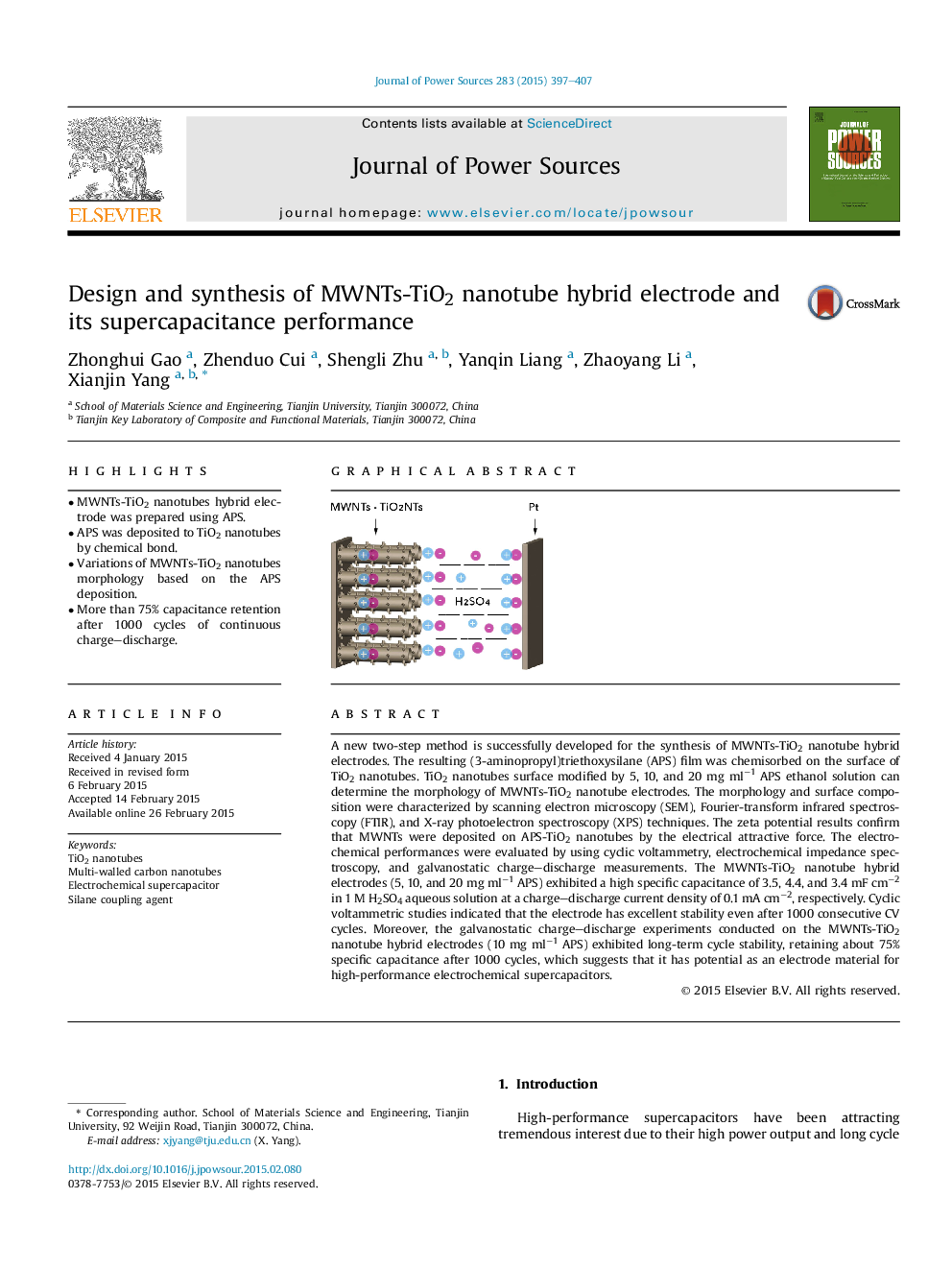| Article ID | Journal | Published Year | Pages | File Type |
|---|---|---|---|---|
| 1292877 | Journal of Power Sources | 2015 | 11 Pages |
•MWNTs-TiO2 nanotubes hybrid electrode was prepared using APS.•APS was deposited to TiO2 nanotubes by chemical bond.•Variations of MWNTs-TiO2 nanotubes morphology based on the APS deposition.•More than 75% capacitance retention after 1000 cycles of continuous charge–discharge.
A new two-step method is successfully developed for the synthesis of MWNTs-TiO2 nanotube hybrid electrodes. The resulting (3-aminopropyl)triethoxysilane (APS) film was chemisorbed on the surface of TiO2 nanotubes. TiO2 nanotubes surface modified by 5, 10, and 20 mg ml−1 APS ethanol solution can determine the morphology of MWNTs-TiO2 nanotube electrodes. The morphology and surface composition were characterized by scanning electron microscopy (SEM), Fourier-transform infrared spectroscopy (FTIR), and X-ray photoelectron spectroscopy (XPS) techniques. The zeta potential results confirm that MWNTs were deposited on APS-TiO2 nanotubes by the electrical attractive force. The electrochemical performances were evaluated by using cyclic voltammetry, electrochemical impedance spectroscopy, and galvanostatic charge–discharge measurements. The MWNTs-TiO2 nanotube hybrid electrodes (5, 10, and 20 mg ml−1 APS) exhibited a high specific capacitance of 3.5, 4.4, and 3.4 mF cm−2 in 1 M H2SO4 aqueous solution at a charge–discharge current density of 0.1 mA cm−2, respectively. Cyclic voltammetric studies indicated that the electrode has excellent stability even after 1000 consecutive CV cycles. Moreover, the galvanostatic charge–discharge experiments conducted on the MWNTs-TiO2 nanotube hybrid electrodes (10 mg ml−1 APS) exhibited long-term cycle stability, retaining about 75% specific capacitance after 1000 cycles, which suggests that it has potential as an electrode material for high-performance electrochemical supercapacitors.
Graphical abstractFigure optionsDownload full-size imageDownload as PowerPoint slide
